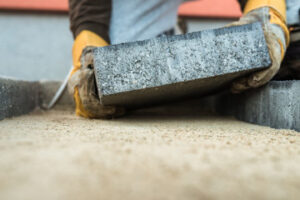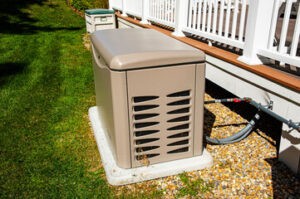If you see cracks wider than a quarter of an inch in your home’s walls, it’s a good idea to call a foundation repair company. These cracks are a sign of damage to the foundation, and they can worsen over time.

A qualified foundation contractor will come to your home to inspect the foundation. He or she will then develop a plan to lift the sunken area of your home and stabilize it. To learn more, visit https://www.sugarlandfoundationrepair.com/.
Structural repairs are needed if the foundation has experienced significant shifts or damage. These can cause other issues, such as sagging walls or doors that no longer close properly, so it’s important to have them done sooner rather than later.
During the structural repair process, homeowners will need to clear the area around the foundation and remove any landscaping or outdoor features that might obstruct access. They’ll also need to secure items inside the home, as the work might cause vibrations that can rattle belongings. These precautions will help ensure the safety of everyone involved in the project.
Professionals who specialize in foundation repair have the experience and expertise to assess and repair the structural integrity of a home’s foundation. They understand how different factors, such as soil conditions and construction techniques, can impact the integrity of a foundation and offer a range of solutions based on the severity of the problem.
When evaluating options, it’s important to choose a contractor with a proven track record and positive customer reviews. They should also offer a comprehensive warranty or guarantee for their services. In addition, they should have access to the tools and equipment needed to make a successful repair.
Whether you’re repairing a concrete block or poured foundation, these professionals have the knowledge and tools to get the job done quickly and effectively. They can perform a variety of repairs, such as adding hydraulic piers to stabilize a sinking foundation, installing steel beams or pillars, and underpinning the foundation to support it on a deeper level.
A well-maintained foundation increases the value of a property, making it more attractive to potential buyers down the road. It also eliminates the risk of serious shifting and damage, saving money on costly repairs.
Uneven settling or cracks in the foundation can lead to major structural damage that can affect your home’s safety and comfort. These problems are also likely to increase your repair costs over time. So, the best option is to act quickly to prevent further damage and save money in the long run.
Waterproofing
A good foundation repair plan includes waterproofing and means to drain excess water away from the home. It is important to have a professional install the waterproofing and the drainage system since it is hard to get at once the repairs are done.
The foundation needs to be waterproofed as soon as the concrete is placed, if not sooner. This is usually a polyurethane membrane. This membrane is installed over the entire area of the basement or crawl space and is sealed to the walls. It is the best way to prevent water from entering the basement and causing serious damage.
After the foundation is repaired, it is important to monitor for signs of water damage, cracking, leaking or shifting. A professional should be consulted to help determine if these are the results of a new problem, or if it is simply time for another inspection and waterproofing.
Doors and windows that stick or don’t open properly, or have gaps developing around them are often the first sign of foundation problems. A sagging floor or sunken section of the basement are also indicators that you may need foundation repair.
A professional can use a variety of methods to repair your foundation problems, depending on the type and severity of the problem. These include helical and push piers, which are driven underneath the foundation by hydraulic pressure. The piers are then attached to the foundation and used as a support for the structure. Another method is to use segmented piers, which are essentially blocks or cylinders of pre-cured concrete that are pushed into the ground under the foundation.
Concrete piles are a low cost alternative to steel piers and can be driven into the soil using hydraulic pressure. These are typically used where the soil is suitable, and not too loose. Another method of repair involves digging a hole beneath the foundation and pouring concrete, either directly into the ground or in a cast.
A good quality concrete repair company will have the skills, equipment and knowledge to perform a wide variety of repair options for your foundation. It is also important to choose a contractor who exclusively specializes in foundation repair, rather than being a “Jack of all trades”.
Sealing Cracks
There are many different kinds of sealants, epoxies, quick-setting concrete, caulks and foams on the market. It is important for homeowners to understand how to use the right products in foundation repair. While a sealant or patch can be used to fill in cracks, it won’t address the underlying problem that caused them. The best way to avoid future damage is to have a professional foundation contractor evaluate the issue and recommend a structural solution.
A professional will take into account the type of cracks in the foundation as well as any other signs that the home is sinking or shifting, such as doors and windows that don’t open or close correctly or sagging floors. A plan is then created to support the home, which typically involves the installation of hydraulic jacks or steel piers. Once the piers or jacks are in place, they will be raised to the original elevation of the foundation, which closes any cracks and stabilizes the house.
When a crack in the foundation is wider than 1/8 inch, it should be considered serious and requires immediate attention by a professional. Wider cracks can indicate a more serious issue like soil shift under the foundation.
Structural cracks are often caused by the movement of the earth underneath a foundation, which puts pressure on the footings of the home. This can also be triggered by changes in moisture levels.
While there are many causes of cracks in a foundation, most can be classified into two categories: non-structural and structural. Non-structural cracks are hairline thin and usually vertical or diagonal. They are usually a result of normal settling, but they should still be evaluated by a professional.
Structural cracks are the most serious and typically have a more significant impact on your home. They may include cracks that look like stair steps through the foundation walls or horizontal cracks along the wall. In the most severe cases, a professional may need to perform underpinning to restore the foundation to its original position. This can be done using hydraulic jacks, push piers or SafeBase wall anchors.
Downspouts
A downspout (also known as a water spout or drain spout) is a pipe that redirects rainwater from your gutter system away from the home’s foundation. It helps to protect your foundation from damage, reduces flooding in basements and crawl spaces, and prevents cracking of drywall.
Clogged downspouts are a serious problem that can cause significant damage to a home’s foundation. As the water continues to collect, hydrostatic pressure builds in the soil and can cause foundation damage. If not addressed, a clogged downspout can lead to large settlement issues that require extensive and costly repairs.
The most common downspout problems are clogs and the lack of adequate drainage near the foundation. Clogs can occur when leaves, debris, and dirt build up in the gutter system or in the downspout. Over time, downspouts can also get rusted and damaged from abrasion. A professional roofer or waterproofing contractor can clean the downspouts, remove any abrasions, and replace the downspout if necessary.
When downspouts drain too close to the foundation, it can erode the soil, which in turn can damage landscaping and even cause the soil to shift under the foundation footings. This causes settlement of the foundation, and is an ongoing threat that can be prevented by installing downspout extensions that are long enough to carry the water away from the house.
